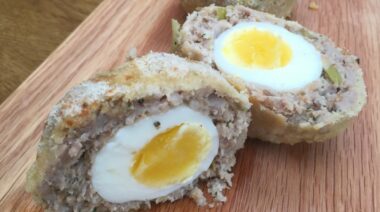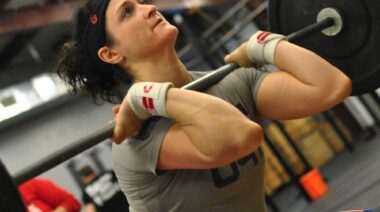Fat used to be a four-letter word.
After a deluge of studies emerged in the 20th century linking dietary fat to a higher risk of cardiovascular disease, a swarm of low-fat products descended into supermarkets across the UK and the US. A “0% Fat” badge on food packaging became a green light to every person in the Western world trying to lose weight. At the time, it looked like the food industry had found the holy grail of fitness commerce: they had figured out a weight loss strategy free from thinking, hard work, and discomfort.
There was one problem. As that Julia Child movie points out, if a food tastes delicious, it’s probably got a shitload of fat in it. Of all the macronutrients, fat is the pinnacle of palatability. The food industry were clever enough to see that early on, and tried to save their products’ deliciousness by upping the amounts of the silver and bronze finishers in the taste race: sugar and salt. Excess added sugar in particular has led us to our present situation: a generation addicted to the stuff, with Type 2 diabetics popping up at an alarming rate and childhood obesity higher than it’s ever been.
The fitness community have taken stock of this. Now coaches and trainers can’t wait to tell you how much you should love fat. It’s become a litmus test for your professional awareness and prowess, even a stick to beat other coaches with.
“He’s telling you to eat less fat?! Doesn’t he know [insert generic outcry about fat’s anti-inflammatory properties / overwrought argument against a higher carb intake based on an incomplete knowledge of the function of insulin here]?!”
There is work to do to overturn the notion that lower in fat means higher in health in some less aware populations. But in the community of intermediate athletes, where fat seems to be the new Jesus, there are three home truths about fat that bear repeating.
Fat isn’t bad. We got it. Now stop putting it in literally everything! [Photo courtesy Pixabay]
1. Fat is the Most Energy Dense Macronutrient
Fairly self-explanatory. At 9 calories per gram, fat packs the biggest caloric punch when compared to protein and carbohydrate, which come in at 4 calories per gram apiece.
With the most popular motivation for dietary overhaul being weight loss, knowledge of fat’s energy density is critically important. The fact is, if you’re only paying attention to the “eat lots of good fat” preachers, and have merely started consuming more with minimal adjustment elsewhere, you’ll send yourself into a caloric surplus faster than you can say “bulletproof.” Effective and long-lasting weight loss is multifactorial, but the right balance of calories coming in and going out is king.
I’m not saying eat less fat. I’m saying eating a truckload of it isn’t the consummate rebuttal to the low fat legacy you’re looking for if you’re trying to lose weight.
2. Balance is Key
Generally, ‘good fat’ is the term given to the mono- or polyunsaturated and omega fat found in food like nuts and fish. These fats are anti-inflammatory, as well as beneficial to your metabolism, cholesterols, and blood health. “Bad fat” refers to food high in saturated fat, such as red meat and cheese, and trans fats, which are found in things like French fries and other processed foods. With the exception of trans fats, it’s critical that you moderate your intake of both “good” and “bad” fats.
Inflammation tends to be seen as a bad thing in the body, and in many cases it is. But we need inflammatory response to heal damaged tissue, manage infection, and maintain our immunity to everyday pathogens. Unsaturated fats alone, if not balanced with enough saturated fats, can downregulate these responses, exposing us to greater illness risk. So get down with your “bad” fats, in moderation and balance with the “good” ones.
3. Less is More, Post-Workout
Post workout is the time to eat more carbohydrate – never more fat. Carbohydrate consumed post-workout replenishes muscular energy stores (glycogen) and gets you good and ready for your next training session. Eating a meal high in fat in the post-workout window blunts the absorption of this carbohydrate, limiting glycogen repletion and your overall recovery.
As a general rule, aim to eat the majority of your carbohydrate around your workout and the majority of your fat away from it.
Don’t Forget the Big Picture
There are many, many people starting out on the “eat right, move more” path who need to hear the whole story about fat: how critical it really is, and how you need it for everything from hormonal balance to nervous system function. But now that we’ve moved away from rejecting fat, let’s not slide right into blithely consuming too much of it.
The fact is, there is no bad or good food. The only bad thing in nutrition is the way we talk about it: in the alternate evangelizing and vilification of macronutrients, and the general rejection of science and common sense. We need to eliminate that from our diets first.
This article was originally published on Pulse Beat Fit UK.
So how should we be talking about our food?






